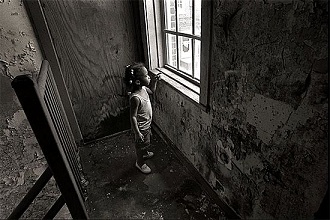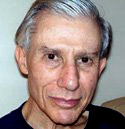America: Land of the Poor

Poverty in the United States Gulf coast area.
Years ago, who could have imagined the appalling growing poverty level in the world's richest country?
Various reports confirm it, including a new one by the University of Michigan's National Poverty Center (NPC), titled “Extreme Poverty in the United States, 1996 to 2011”.
NPC promotes multidisciplinary research on poverty and policy. It mentors and trains poverty researchers. It analyzes causes and consequences, and addresses pressing policy questions at both federal and state levels.
How is poverty calculated, it asked? The Census Bureau issues annual thresholds. They represent minimal income levels required to support various family sizes.
Its methodology dates from the mid-1960s and hasn't changed. Inflation's taken into account annually. Families are judged poor based on pretax income. Non-cash benefits aren't counted, such as Medicaid and food stamps.
In 2010, singles under 65 with incomes of $11,344 or less were designated poor. For those over 65, it was $10,458.
For single parents with one child, it's $15,030. With two children, it's $17,568. For two adults with no children, it's $14,602. With one child, it's $17,552. With two children, it's $22,113. With three children, it's $26,023.
Adjusted for inflation, current thresholds are slightly higher, but bear no relation to reality. Individuals and families need double or more these levels to avoid poverty. Moreover, jerry-rigged inflation numbers further distort cost of living effects on all households.
The Department of Health and Human Services has its own federal aid eligibility guidelines. They differ slightly from Census numbers, and reflect marginally higher Alaska and Hawaii thresholds.
NPC's H. Luke Shaefer and Harvard Kennedy School's Kathryn Edin studied how Clinton's 1996 welfare reform affected millions of poor Americans.
The Personal Responsibility and Work Opportunity Reconciliation ("welfare reform") Act (PRWORA) changed eligibility rules. From 1935 until then, needy households got welfare payments through Aid to Families with Dependent Children (AFDC). It protected states by sharing caseload costs during hard times.
Thereafter, Temporary Assistance for Needy Families (TANF) set five year time limits. It gave states fixed block grants to administer at their own discretion. As a result, America's most needy face huge risks during economic downturns when reduced federal aid exacerbates dire conditions.
Under TANF, recipients must work or receive job training, even during hard times when employment's harder than ever to find. Moreover, single mothers with young children are grievously impacted. During their most formative years, children need them as caregivers.
With increasing austerity official federal policy, protracted harder than ever hard times are assured. Future NPC and other reports will reflect them.
For example, in 1994/1995, AFDC served 75% of impoverished families with children. In 2008-2009, it was 28%. The percentage varies by state. Some help fewer than 10% of impoverished families.
Moreover, when TANF was established, contingency fund assurances were given. That was then. Austerity demands little or none. The 2009 Recovery Act included TANF Emergency Fund aid. In September 2010, it wasn't renewed.
During today's dire economic times, budget strapped states force-feed harsh cuts. Vulnerable residents are harmed most, including families with children on TANF.
Moreover, its benefits are half or less poverty thresholds. Based on real inflation adjusted dollars, they've dropped precipitously since 1996.
In 2011, NPC estimates 1.46 million US households lived on $2 or less a day. It reflects a 130% increase from 636,000 in 1996. Around 2.8 million children live in extreme poverty. It represents 16% of all those impoverished.
Supplemental Nutrition Assistance Program (SNAP) benefits reduce, but don't eliminate extreme poverty. So-called reform, said NPC, "has been followed by a dramatic decline in case assistance caseloads."
They dropped from around 12.3 million 1996 monthly recipients to 4.4 million in June 2011. Adult beneficiaries comprise only 1.1 million.
As a result, millions of unemployed parents "have little access to means-tested income support programs." A new generation of poor resulted. They include "households with children living on virtually no income."
Children always are harmed most. Since November 2008, those affected increased dramatically at a time safety net protections are way inadequate and eroding.
Demographically, married couples comprised 37% of extreme poverty households. For single females, it's 51%.
About 48% of affected households are headed by White non-Hispanics, 25% by Blacks, and 22% by Hispanics. NPC added:
"Thus, extreme poverty is not limited to households headed by single mothers or disadvantaged minorities, though the percentage growth in extreme poverty over our study period was greatest among these groups."
It also said eroding social benefits are "leaving many households with children behind." They haven't enough resources to get by. TANF and other forced austerity bear most blame.
Given bipartisan agreement for additional deep cuts, America's most vulnerable more than ever are on their own out of luck because policy makers able to prevent it don't give a damn.
Cold hard truths reveal what they and complicit media scoundrels try hard to suppress. Growing impoverished millions reflect America's dark side.
___________________________________________________________________________________

Stephen Lendman: I was born in 1934 in Boston, MA. Raised in a modest middle class family, attended public schools, received a BA from Harvard University in 1956 and an MBA from the Wharton School at the University of PA in 1960 following 2 years of obligatory military service in the US Army. Spent the next 6 years as a marketing research analyst for several large US corporations before becoming part of a new small family business in 1967, remaining there until retiring at the end of 1999. Have since devoted my time and efforts to the progressive causes and organizations I support, all involved in working for a more humane and just world for all people everywhere, but especially for the most needy, disadvantaged and oppressed. My efforts since summer 2005 have included writing on a broad range of vital topics ranging from war and peace; social, economic and political equity for all; and justice for all the oppressed peoples of the world like the long-suffering people of Haiti and the Palestinians. Also co-hosting The Global Research News Hour, occasional public talks, and frequent appearances on radio and at times television. I also am a Research Associate of the Centre for Research on Globalization. I live in Chicago and can be reached at lendmanstephen@sbcglobal.net. Also visit my blog site sjlendman.blogspot.com and listen to The Lendman News Hour on RepublicBroadcasting.org Monday - Friday at 10AM US Central time for cutting-edge discussions with distinguished guests on world and national issues. All programs are archived for easy listening. My new book "How Wall Street Fleeces America: Privatized Banking, Government Collusion and Class War" can be ordered HERE.
___________________________________________________________________________________
Photo: americanpoverty.org
URL: http://www.a-w-i-p.com/index.php/2012/03/09/america-land-of-the-poor
























